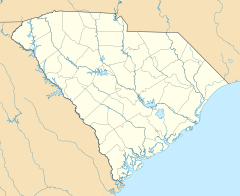This article needs additional citations for verification. (April 2023) |
Former name | Savannah River Laboratory |
|---|---|
| Established | 1951 |
| Research type | Nuclear and basic science |
| Budget | $249 million (2017) |
| Director | Vahid Majidi[1] |
| Staff | 980 |
| Location | Savannah River Site, near Jackson, South Carolina, U.S. 33°20′34″N 81°44′17″W / 33.342792°N 81.738121°W |
Operating agency | Battelle |
| Website | srnl |
| Map | |
The Savannah River National Laboratory (SRNL) is a multi-program national laboratory for the U.S. Department of Energy’s (DOE) Office of Environmental Management. SRNL is located at the Savannah River Site (SRS) near Jackson, South Carolina. It was founded in 1951, as the Savannah River Laboratory as a research, development and manufacturing center for tritium production from lithium. The intended end use of the tritium was in nuclear fusion weapons (such as hydrogen bomb), as well as in thermonuclear fusion reactors for civilian use. Plutonium production and research was a second main activity in the lab at that time.
Since the end of the Cold War, the laboratory expanded its civilian research. Savannah River Laboratory was certified as a national laboratory on May 7, 2004.[2]
SRNL research topics include environmental remediation, technologies for the hydrogen economy, handling of hazardous materials and technologies for prevention of nuclear proliferation, vitrification of nuclear waste and in hydrogen storage. SRNL is a founding member of the South Carolina Hydrogen & Fuel Cell Alliance (SCHFCA).
- ^ "Vahid Majidi, Ph.D." Savannah River National Laboratory. Retrieved May 13, 2024.
- ^ "Energy Secretary Abraham Certifies Savannah River Technology Center As New Department of Energy National Laboratory". May 7, 2004. Archived from the original on May 27, 2010.
